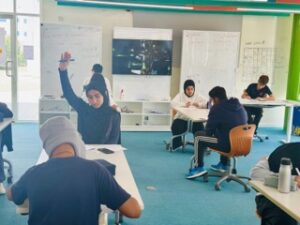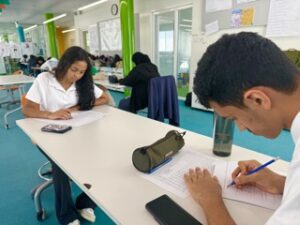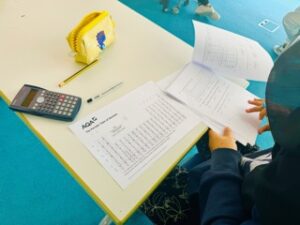During the span of the past seven weeks, students in grade 9 science have been immersed in the study of the elements found in the periodic table, focusing on their physical and chemical properties. Throughout this period, the students have honed their research skills by digging deeper into specific elements and presenting their findings to the class. Each student was assigned a unique element to investigate, looking into details such as environmental and economic factors of mining those elements, its symbol, atomic and mass numbers, discovery date and discoverers, unique properties, uses, and an intriguing fun fact associated with the element.
One of the key components of our study has been the adoption of an inquiry-based learning approach, which has proven engaging and effective. By posing questions and engaging in activities, the students have explored the physical and chemical properties of different groups of elements. Some examples of the inquiry-based questions and activities conducted by the students include:
- Designing an experiment to investigate the reactions of alkali metals with water and comparing the reactivity of different alkali metals.
- Investigating the effects of exposure to air on alkali metals, observing changes over time and analyzing the results.
- Identifying patterns in the reactivity and physical properties of alkali metals, creating data tables and analyzing trends.
- Investigating the reactions of alkaline earth metals with acids and designing experiments to compare their reactivity.
- Conducting a flame test of alkaline earth metals, such as burning magnesium ribbon, to observe and analyze the results.
- Investigating the reactions of halogens with metals. Comparing the relative reactivity of halogens by designing an experiment that assesses their ability to displace each other from their compounds.
- Exploring the uses of noble gases and transition elements.
To conclude their learning journey, this week the students completed a summative criterion A assessment. This assessment served as an evaluation of their knowledge and understanding of the concepts explored throughout the unit, providing a comprehensive measure of their progress.





